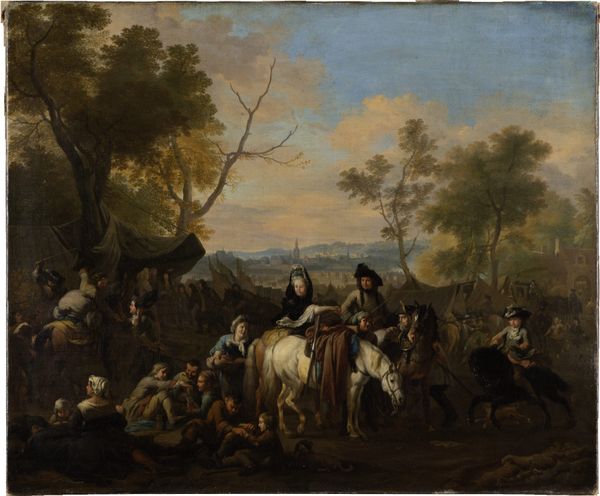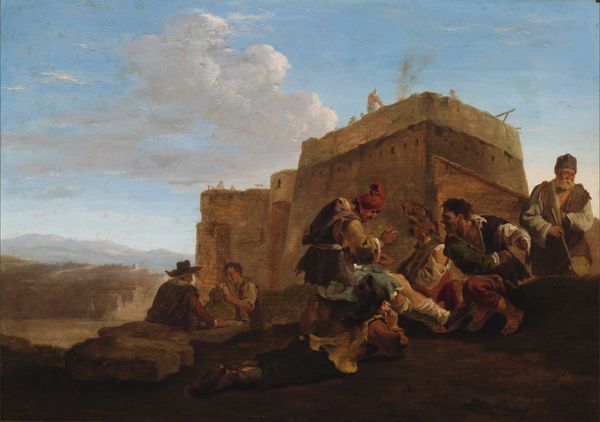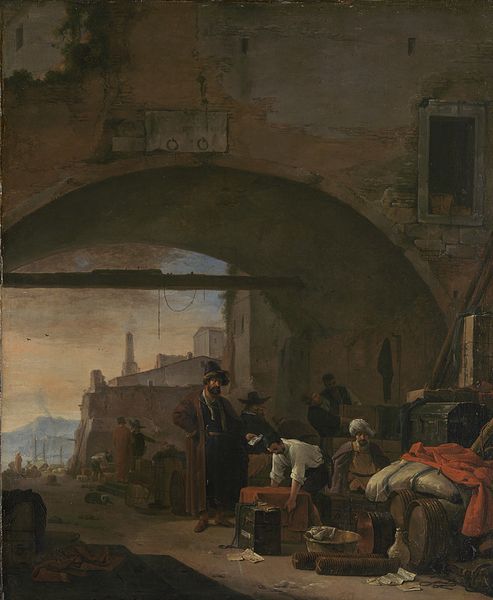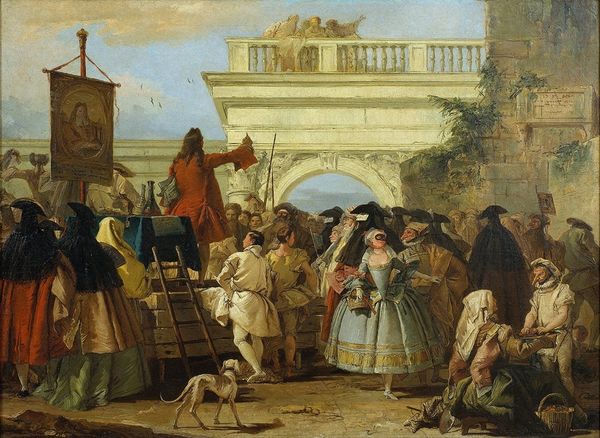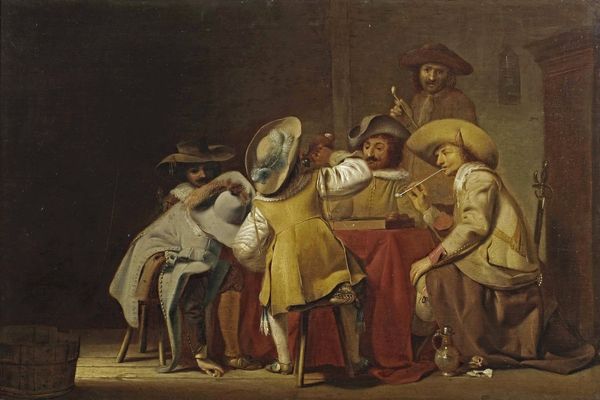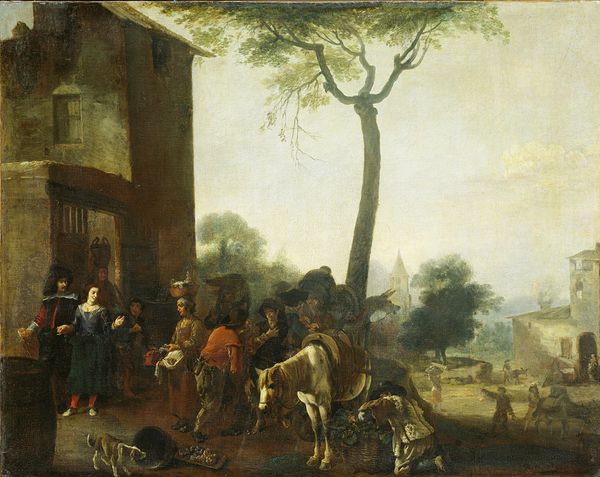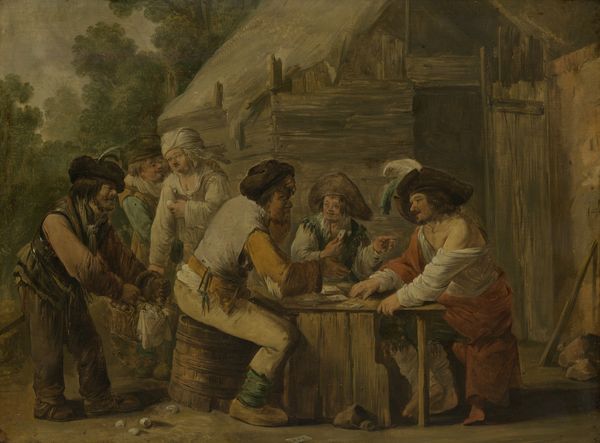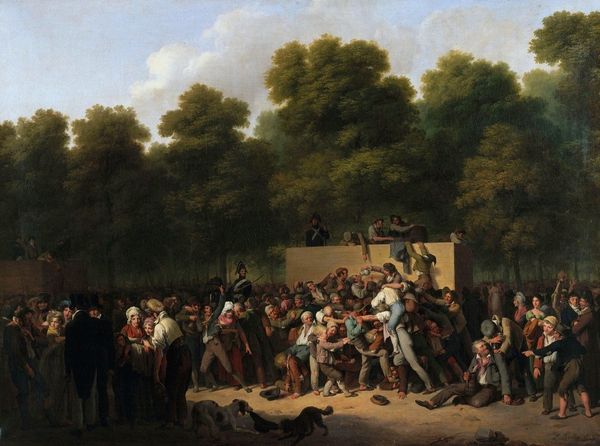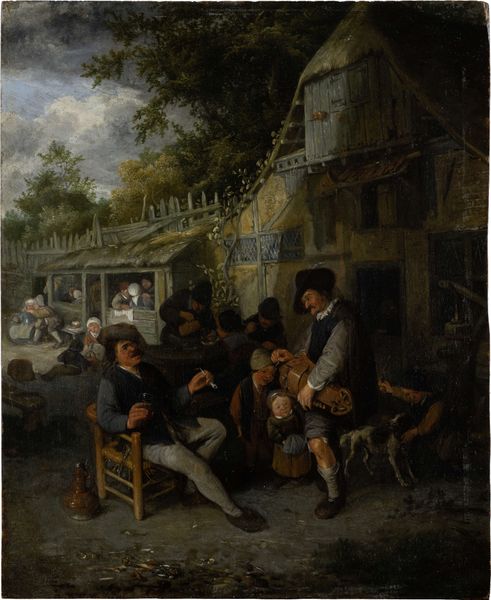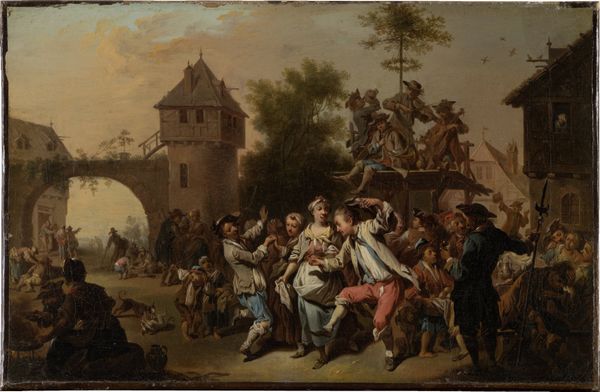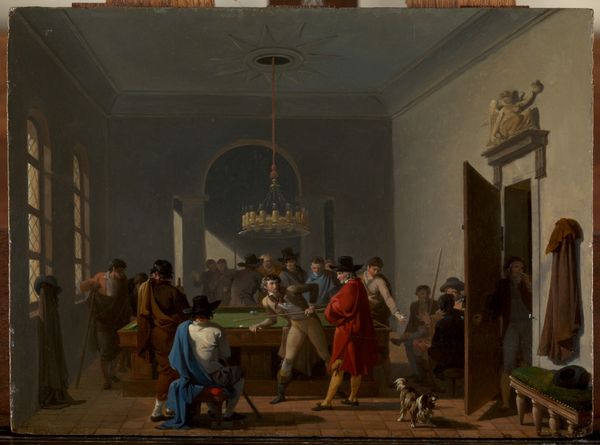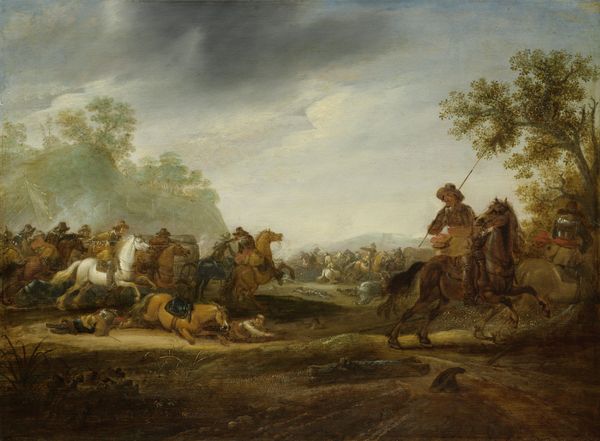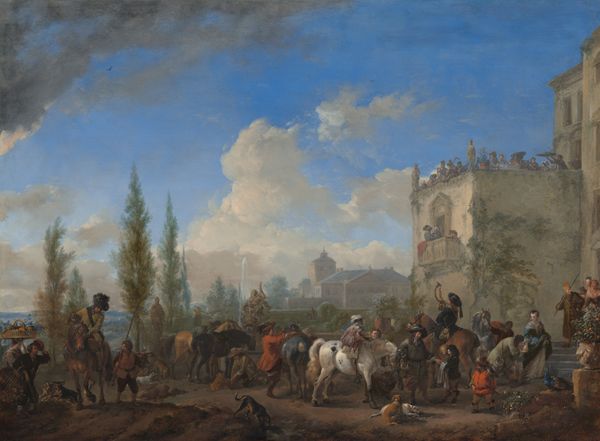
painting, oil-paint
#
narrative-art
#
baroque
#
painting
#
oil-paint
#
oil painting
#
cityscape
#
genre-painting
#
history-painting
Dimensions: height 67.5 cm, width 76 cm, depth 8 cm
Copyright: Rijks Museum: Open Domain
Curator: Oh, there's such an intensity to this scene, isn't there? The artist here is Jan van Huchtenburg, and we’re looking at "Casting the Dice for Life or Death," dating roughly from 1680 to 1720. It's an oil painting currently residing here at the Rijksmuseum. What are your first thoughts? Editor: A stage! That's my initial impression. The painting's tonality— the use of light and shadow-- reminds me of theater lighting focusing on a central tragic event about to unfold. Curator: "Tragic event" is definitely a fitting description. What gives you that impression, though? Editor: Well, the dice are such obvious symbols of fate. When societies turned to chance—games or tests—it was because larger structures had failed, and the community asked the gods to express their verdict. Even the tower in the background appears to stand in for failed fortification. It casts a pall over the whole gathering. Curator: Interesting that you pick up on that—and I agree. It reminds me, in a weird way, of being on set. I imagine van Huchtenburg arranging each figure as if on a stage. The heightened gestures, the central figures illuminated against the somber, almost monochromatic backdrop… What narrative underpins these characters and their positions, I wonder. Editor: Baroque paintings had a love for theatricality— the human form was arranged to give maximum emotion. Notice that man on the drum! His position conveys a lot. If we unpack the symbols - the tower that stands tall behind them to suggest power or protection, but whose shadow is overcome by darkness - the stage is set for some form of execution. Curator: This "casting the dice" – is this the final arbiter? Does that act represent, say, a commentary on the justice system of the era, perhaps? I suppose van Huchtenburg uses symbols in place of overt censure... Editor: Possibly, the dice imply this is how judgments of life and death took place in the society that generated that cultural artifact! Jan van Huchtenburg's painting functions to record what society valued; this imagery seizes that emotion from then and holds it now. A little haunting, isn’t it? Curator: Haunting and a bit too close for comfort, isn’t it? Even now! Thanks to Huchtenburg's command of light and shadow—and those telling symbols—the human stakes feel acutely immediate.
Comments
No comments
Be the first to comment and join the conversation on the ultimate creative platform.
